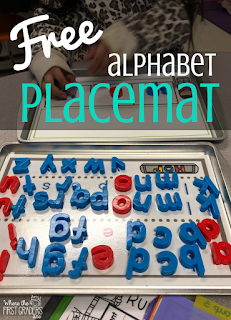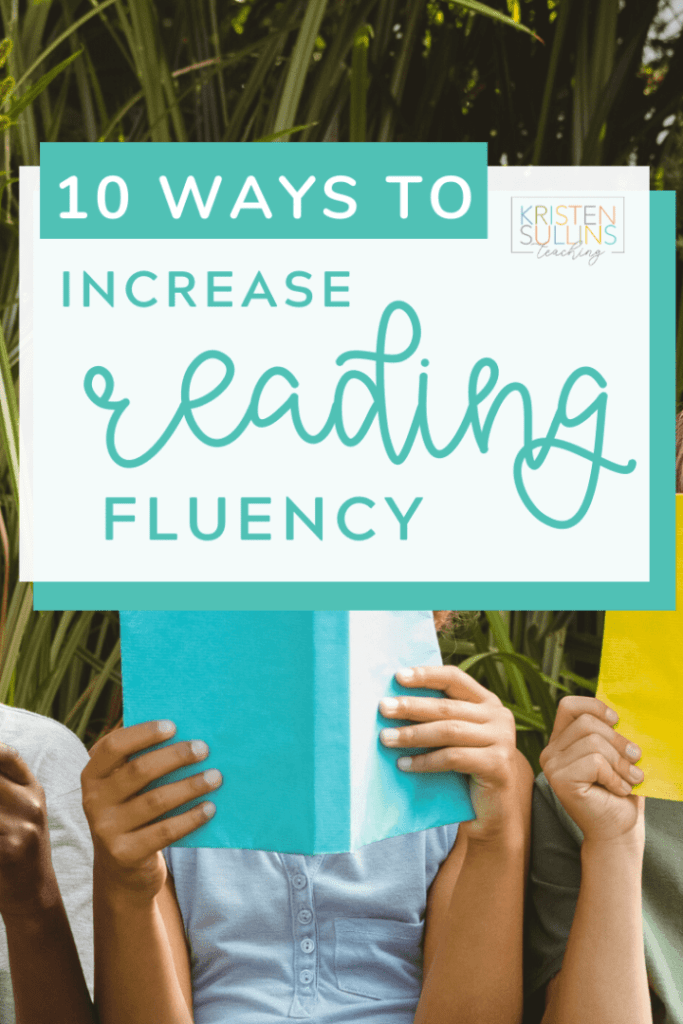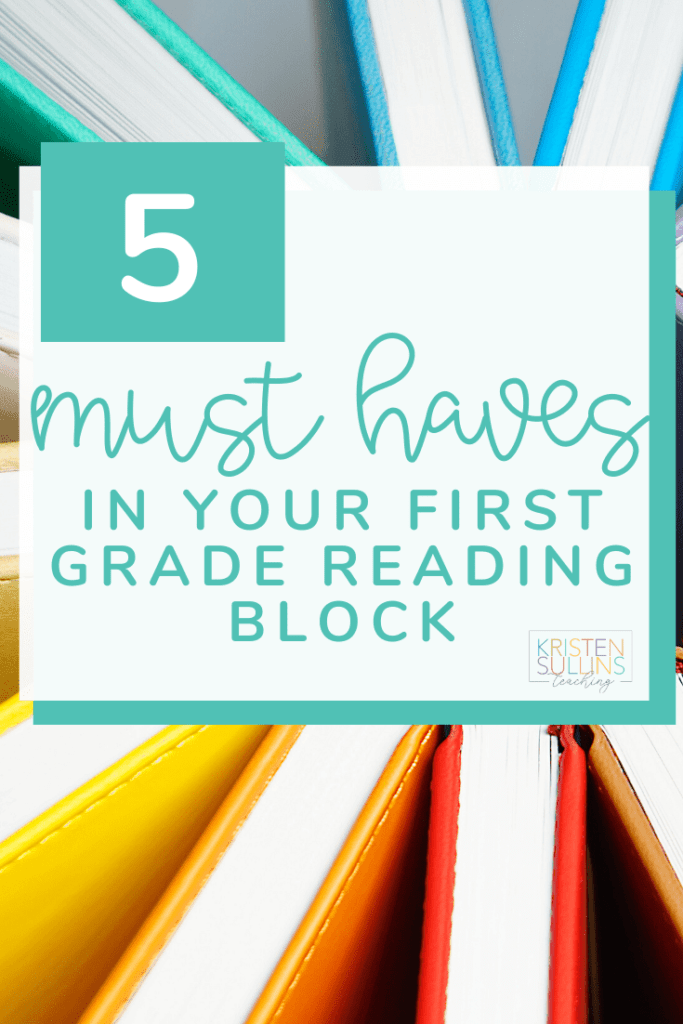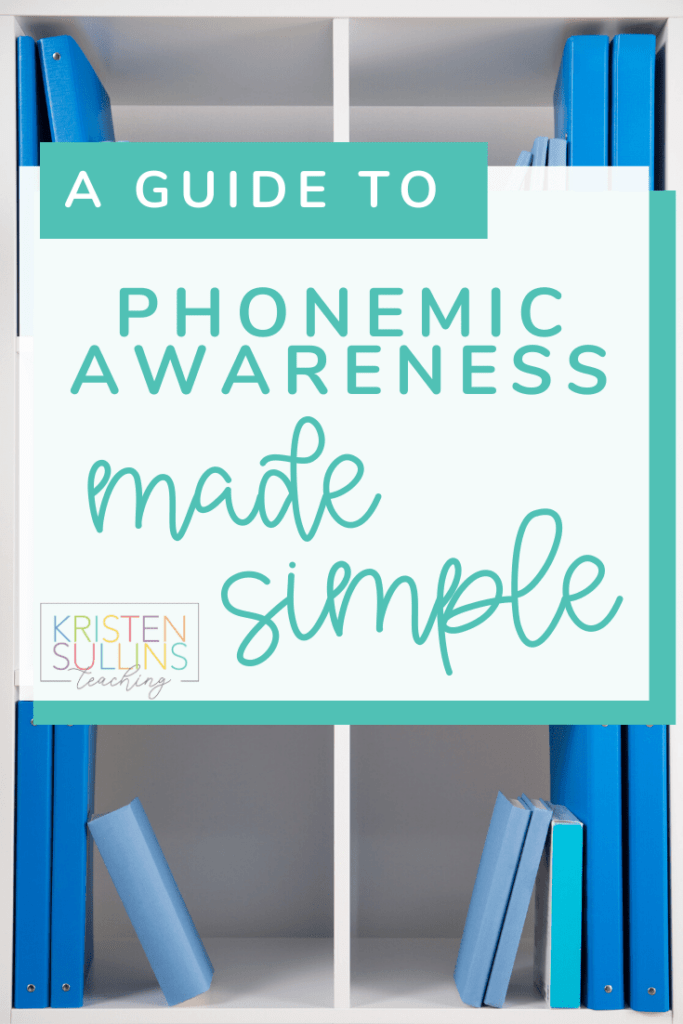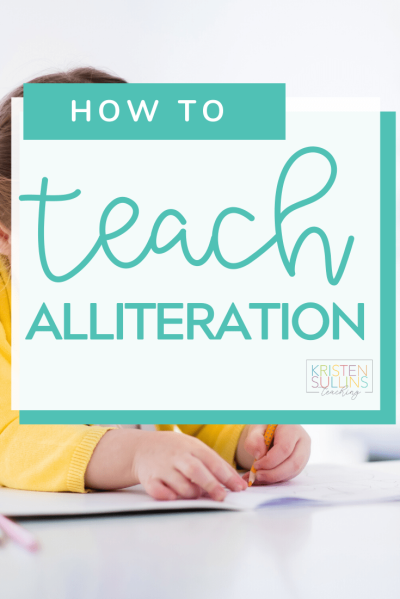
Do you feel like you don’t know where to start when it comes to guided reading warm ups? With the time constraints of our guided reading time combined with the attention span of our students, small group warm ups can be very challenging. BUT, two minutes can be really powerful as long as you’re intentional with it.
What kind of warm ups are we talking about?
Now you’re probably thinking “Ok, guided reading…. it’s something that we already have resources for.” Schools will typically provide us with a leveled literacy library or guided reading sets. Our school just bought the Fountas & Pinnell Classroom set and all of those things are great, but that’s not what I’m talking about today.
I’m talking about guided reading warm-ups that I can use no matter what book I’m working on with my kids. These warm ups allow me to focus on a specific skill and I’m going to work on that skill until they’ve mastered it.
A few examples of skills I’m referring to:
- alphabet fluency
- identifying beginning sounds and ending sounds
- adding and deleting phonemes
- manipulating phonemes
These skills are things that you have to do repetitively, every day, regardless of the book if you are truly going to build a solid foundation for oral language which leads into reading fluency. For this reason, I don’t like using a lot of premade resources, I like to be able to manipulate hands on resources to meet my groups’ needs.
Change Your Planning Mindset
So how do you plan or schedule the guided reading warm-ups? It’s not as easy as just saying I want to do this activity on Monday, and this activity on Tuesday because that might not be what your group is ready for. They might be moving faster or they might be moving slower than what you had planned out.
What I found that works a lot better for me is not to assign those activities to a day, but rather have a fluid list of activities that I can start on and say “Ok, I’m going start with this activity and we’re going work on it until I feel like my kids have mastered it.”
Get your free Guided Reading Warm Up Guide by entering the site password {HERE}
-or- Join the Free Resource Library {HERE}
Using this method of planning, you will always be prepared. If your students master a skill halfway through Tuesday’s warm up and you have two minutes left, you don’t have to waste the rest of your warm up trying to figure out what to do with them.
If you have a fluid plan and you have activities prepped and ready behind your table, then guess what? You just got two more minutes which doesn’t sound like a lot, but with the time constraints of our guided reading time combined with the attention span of our students, two minutes can be really powerful as long as you’re intentional with it.
Today I'm going to cover my two favorite types of warm ups: sound boxes and sight words.
Warm Up: Sound Boxes
One of my favorite warm-up ideas involves manipulatives and sound boxes (blending mats) that I have printed and laminated. For the manipulative part, we use fuzzy pom-poms, which kids absolutely love and you can get for super cheap at the dollar store. Then on Fridays, we will use skittles and the kids get to eat them as a reward for working hard all week.
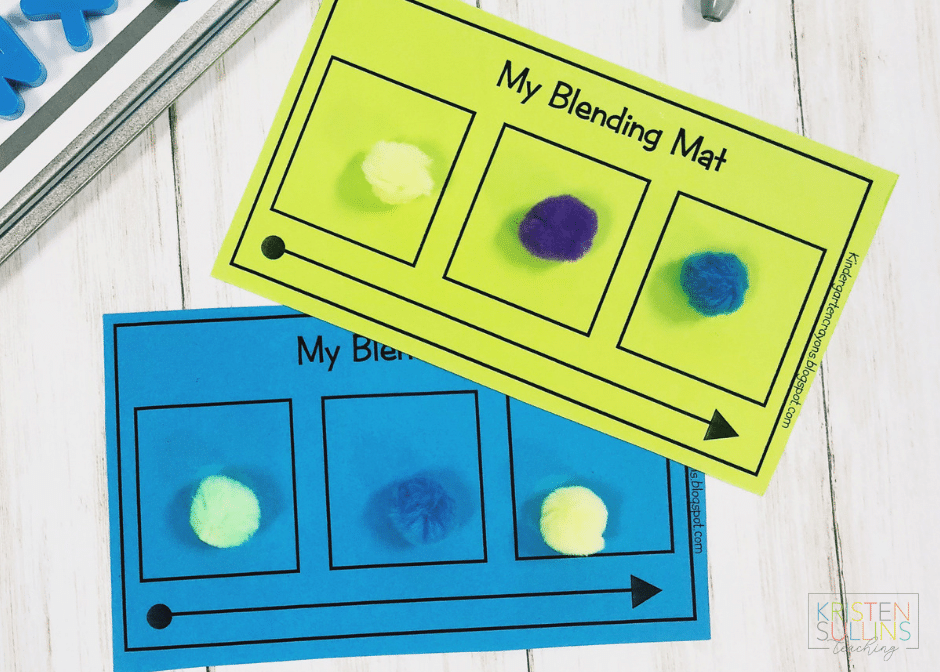
Start with manipulatives so that your students can focus on the oral language SKILL, not finding and matching the correct alphabet letter.
Once your students are ready, you can start manipulating alphabet letters. Be sure to download this FREE Alphabet Placemat and Sound Boxes Resource. It will allow you to keep your alphabet letters organized and easy to find on a cookie sheet where every letter has its place! The sound boxes sheet easily allows students to organize their letters at the top and drag down the letters to form words when they are ready.
Get your free Alphabet Placemat by entering the site password {HERE}
-or- Join the Free Resource Library {HERE}
I know as a teacher, when I am short on time, I always want to just skip some of those little repetition steps and jump straight to the blending because that’s the end goal. But we have to remember that these kids have skills that are missing that’s why they’re not reading on level. So, you have to slow down and meet them where they are at and make time for repetition or they are not going to master the skills of blending the sounds and they definitely won’t be able to do it if they’re not sitting at a table with you.
Manipulatives you can use with sound boxes:
•fuzzy pom poms
•math counters
•Target Dollar Bin mini erasers
•skittles, m&m’s, starburst, etc.
•playdough (smash for each sound)
•unifix cubes or linking cubes
•counting bears
•legos
•kids toys (matchbox cars, etc)
•bingo chips
•wiggly eyes
Activities you can do:
•rhyming words – change only beginning sound (cat to rat)
•change end sounds (cat to cap)
•change middle sounds (cat to cut)
•remove sounds (cat to at)
Warm Up: Sight Words
I like to have the kids write out a few sight words each day and we will use those sight words as our group flashcards. Of course, most of the time I end up having to re-write part of it because you can’t read what they wrote, but you get the idea.

Recently, after reading Jan Richardson’s books, I have my groups write out three sight words on post it note, or on the table before we even open our text.
I also like using these kinds of resources that we make in our small groups in our stations. If we are learning a new sight word with my lowest group, we might put that sight word in a sentence.

We write it on a sentence strip, cut it apart, work on putting the sentence back together. Now I have made a station for the rest of my class to use and those kids have ownership of it because they helped me make it to so when I could do a lot of my guided reading stations. Read more about our Sight Word Sentence Station HERE.

Here is another example. Read more about how reading sight words with punctuation can help increase reading fluency HERE.
Sight Word Activities:
•teacher made flashcards
•student made flashcards
•write three sight words on a post it note
•write three sight words on a white board/table
•write sight words with punctuation for fluency
•sight word bingo

Research shows that students retain and understand sight words more efficiently when they are learned in phrases.
Sight Word Phrase Activities:
•teacher made phrase flashcards
•student made phrase flashcards
•write one sight word phrase on a post it note
•write one sight word phrase on a white board/table
•sight word sentences (written on a sentence strip & cut apart)
•copy a mentor sentence from the text
Bonus Sight Word Activity: Post sight words next to the door as an exit ticket and have students touch and read at least one sight word each time they leave the room.



